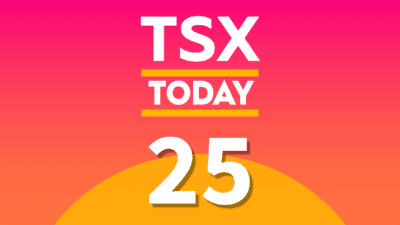These days, exchange-traded funds (ETFs) can deliver just about any asset class to investors, providing quick and cost-effective diversification. You can pick exotic sectors like cybersecurity or obscure regions of the world. But for Canadian investors of a certain age (approaching or in retirement), ETFs also make a lot of sense for getting quick and efficient exposure to good old-fashioned dividends and the predictable tax-efficient income that accompanies them.
Chartered financial analyst David Kletz, an analyst and portfolio manager for Toronto-based Forstrong Global Asset Management Inc., says that in an era of rock-bottom bond yields, investors have increasingly turned to dividend ETFs to bolster portfolio yield.
However, all dividend ETFs are not created equal
Investors need to pay attention to how each ETF is constructed, including sector composition, quality, and concentration. Because Canada is dominated by the financial and energy sectors, this is reflected in the country’s dividend ETFs, which can add risk. Some will cap exposure to any one sector: Kletz provides the example of the iShares Core S&P/TSX Composite High Dividend Index ETF (TSX:XEI), which caps any one sector at 30%.
Quality is important too; you can’t just choose the highest-yielding dividend ETF without paying attention to quality, which is defined as dividend payers with mature, stable, cash-flowing businesses.
High yield can be a function of share price weakness: if higher-yielding names pay too much out of their free cash flow, their dividend payments may be susceptible to being cut. Kletz notes BMO’s suite of dividend ETFs screen potential holdings across quality metrics, including stable or positive three-year dividend-growth rate and five-year payout sustainability.
In addition to sector risk, you can have concentration risk with too large an exposure to any one given company.
Interest rates
While dividend-paying stocks are almost synonymous with stable established businesses, they also tend to be sensitive to changes in interest rates. In a rising rate environment, dividend stocks become relatively less attractive compared to bonds. With the Trump-led fiscal expansion, inflation expectations have begun to accelerate and the jump in bond yields could mark an inflexion point in the 35-year bond bull market. Therefore, Kletz warns, “dividend investors must be even more vigilant when assessing which products to establish or maintain positions in.”
Another issue is asset location. The focus of this column is Canadian dividend payers, which ideally will be held in TFSAs and non-registered accounts. U.S. dividend ETFs are best held in Canadian RRSPs. If in TFSAs, dividends can be reinvested into more units without tax consequences now or in the future. If held in taxable portfolios, investors in Canadian dividend ETFs can benefit from relatively benign tax treatment, thanks to the dividend tax credit.
You can, of course, hold domestic dividend ETFs in RRSPs, but keep in mind you won’t be benefiting then from the dividend tax credit; at some point, you will have to withdraw funds from the RRSP or the RRIF that many convert it to after age 71. When that occurs, the money being pulled out will be taxed like earned income or interest income at a higher rate than if it were non-registered dividend income.
For that reason, I’d put fixed-income ETFs (or bonds held directly) and foreign and U.S. stocks or ETFs inside the RRSP first. Note that there are Canadian dollar–hedged U.S. dividend ETFs available for those who believe the loonie will appreciate against the U.S. dollar.
Some ideas
So what particular domestic dividend ETFs should be considered?
Scanning the TFSAs and non-registered accounts of our own family, I see in both our TFSAs Vanguard FTSE Canadian High Dividend Yield Index ETF (TSX:VDY), and in our joint non-registered account, the iShares S&P TSX Canadian Dividend Aristocrats Index ETF (TSX:CDZ). Both of these are long-term holds; in fact, CDZ–a recommendation of Fred Kirby of Armstrong, B.C.-based Dimensional Investment Planning Inc.–was originally purchased when it was part of the Claymore ETFs that were later sold to iShares.
For this article, Kirby prepared the following table of the major Canadian dividend ETFs and their exposure to the financials and energy sectors. He continues to give the nod to CDZ.
| Ticker | Financials
% |
Energy
% |
Total
Energy & Financials % |
Five-Year Return* |
| CDZ | 23% | 21% | 44% | 8.0% |
| FDV | 11% | 1% | 12% | Not five years old |
| HAL | 28% | 14% | 42% | 9.3% |
| VDY | 62% | 20% | 82% | Not five years old |
| XDV | 59% | 7% | 66% | 8.1% |
| XEI | 32% | 23% | 55% | 7.1% |
| ZDV | 36% | 23% | 59% | 6.9% |
*Through Nov. 30, 2016.
Let’s imagine you are torn between picking CDZ and VDY, and you only want to buy a single dividend ETF. In this case, the choice will really depend on how exposed you are already to individual large-cap Canadian stocks.
For example, many Canadian investors will already have plenty of exposure to the big Canadian bank stocks. VDY’s top 10 holdings include all five of those giant household names. In fact, a quarter of the portfolio alone is in just two of them: Royal Bank of Canada and Toronto Dominion Bank, as of Oct. 31, 2016. The other five holdings also include two other financials: Manulife Financial and Sun Life Financial. It’s little wonder a whopping 62% of the ETF is in financials. The other three include Rogers Communications and energy players Enbridge and TransCanada.
VDY’s management expense ratio (MER) is very low at 0.22%. CDZ has a higher MER of 0.67%, but if you already own most of the top 10 in the Vanguard product, CDZ provides a more diversified portfolio of 75 domestic dividend payers.
The only bank in CDZ’s top 10 is National Bank, and it makes up only 2% of the portfolio; financials make up only 22.6% of CDZ, followed by energy (21%), industrials (17% and consumer discretionary (12%). The other top holdings are small positions of 2% or 3% in stocks the average investor is unlikely to hold individually or may not even have heard of: Russell Metals, Gibson Energy, Corus Entertainment, and the like.
An alternative is BMO Canadian Dividend ETF (TSX:ZDV), which holds 50 stocks chosen with a rules-based methodology that considers the three-year dividend-growth rate, yield, and payout ratios. The MER of 0.39% is roughly between the Vanguard and iShares offerings, as is the 34% exposure to the financial sector. The top 10 includes two big banks (BNS and CIBC), but with positions of 2% or 3% each, it is much less concentrated than VDY. Other top holdings include IGM Financial, Agrium, Telus, and Vermilion Energy.
There are also a handful of actively managed dividend ETFs. One is the Horizons Active Canadian Dividend ETF (TSX:HAL), sub-advised by Guardian Capital LP. The management fee is higher: 0.7% or 1.45% for Advisor Class. Guardian strives for a mix of mature high dividend payers and higher-growth companies with lower yields that have potential for more future price appreciation.
Another actively managed product is First Asset Active Canadian Dividend ETF (TSX:FDV), which sports a management fee of 0.55. At its discretion, the manager may provide 30% exposure to U.S. dividend payers.








